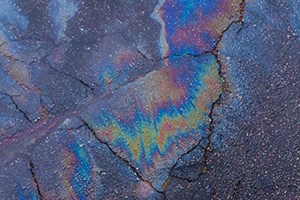 Whether it’s gas or diesel, fuel is found in just about every industrial workplace. Companies use them to power forklifts, trucks, transportation vehicles, and a wide range of heavy equipment. Because it’s such a commonly used chemical in the workplace, there’s a high risk for spills. This is why it’s important for companies to take the necessary precautions to protect themselves against spills, along with creating a plan for containing and cleaning fuel in the event that a spill occurs.
Whether it’s gas or diesel, fuel is found in just about every industrial workplace. Companies use them to power forklifts, trucks, transportation vehicles, and a wide range of heavy equipment. Because it’s such a commonly used chemical in the workplace, there’s a high risk for spills. This is why it’s important for companies to take the necessary precautions to protect themselves against spills, along with creating a plan for containing and cleaning fuel in the event that a spill occurs.
As the old saying goes — hope for the best but plan for the worst — holds true in this instance. To learn more about the dangers of a workplace fuel spill, and the proper steps of fuel spill clean-up, keep reading.
Fuel Is Flammable
This probably isn’t a shocker to most people, but fuel is a highly flammable and combustible liquid. Allowing it to spill in the workplace creates a danger to any nearby employees. If a spark or flame were to make its way into the area, the spilled fuel could ignite into a fire.
Fuel fires are especially dangerous since they are difficult to put out. Spraying water over them isn’t going to have much of an effect, placing the entire workplace in jeopardy. This is one of the reasons why fuel should be stored away from flames and heat sources, and only placed in designated containers (gas will burn through Styrofoam containers).
And Slick, Too
Fuel is also incredibly slick. Even if it doesn’t contribute to a fire, a patch of spilled fuel on the hard concrete floor may send an unsuspecting worker tumbling to the ground. It only takes a couple drops of gas to turn an otherwise safe working area into a slip-and-fall hazard. Slip-and-falls are one of the leading types of workplace injuries, costing companies billions of dollar in direct and indirect costs each year. Reducing fuel and cleaning up diesel or other chemical spills will help to safeguard your company from such accidents.
Cleaning Up Fuel Spills: What’s The Best Approach?
Cleaning up a workplace fuel spill is actually easier than most people realize. If the source of the spill is a fuel tank, an inflatable pool can be placed directly underneath the leak to help contain it. Any fuel leaking from a pump or container will fall directly into the pool.
Absorbent socks found in spill kits can also be used to help control a fuel spill spreading on the ground. And depending on the size of the spill, absorbent pads may be used to clean the fuel up.
Hazardous waste containers are a must have item to have to place fuel soaked absorbents in until they are properly disposed of. Mostly importantly, always dispose of used materials according to Local, State and Federal regulations. Learn how to choose the right spill containment kit for your workplace.